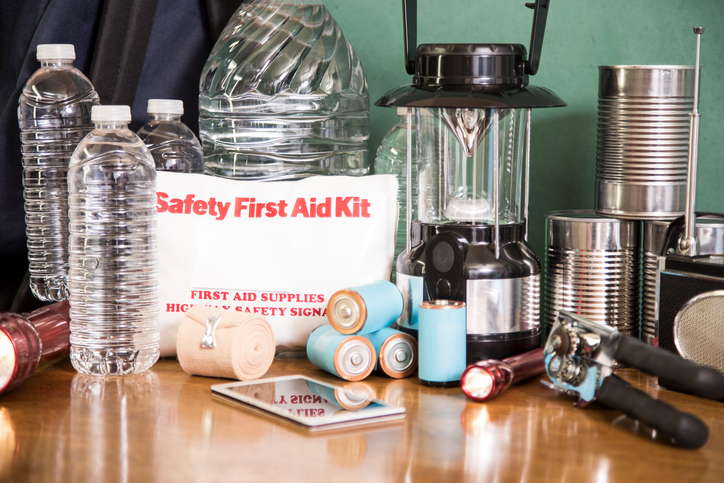What to keep in your home emergency kit
Are you part of the unprepared majority? You can pull together a household emergency kit, with some of these items.
Light sources
Have multiple mini LED flashlights on hand, along with a few larger ones and spare batteries. Be cautious and sparing with the use of candles and matches whenever possible. Glow stick jewelry can be helpful for keeping track of pets and small children.
Medical supplies
A well-stocked first aid kit will include Band-Aids, gauze, tape and over-the-counter pain relievers for managing cuts and scrapes.
If anyone in the home relies on prescription medication, make certain you always have at a week’s worth in the home. If the medication needs to be temperature controlled, plan for a way to keep it at the right temperature even if the electricity is out.
Duct tape
Duct tape can provide a fast, temporary fix for shattered windows, unsealed doors and a number of other common emergency situations. Be sure to have at least a few rolls on hand.
Water
Clean water is more important than food in the short-term. Be sure to have multiple jugs of water in the house at any given time. As plastic will eventually leak chemicals into the water and odors will seep through, it is best to use and refill your supply about once a year.
Canned foods
Canned foods last the longest and can be eaten without preparation. Be sure you have a manual can opener in the house.
Whistle
A whistle can attract attention if you’re trapped inside your home or otherwise attempting to call for help. Include this in your emergency kit.
Other items to consider
You may also want to include the following:
- Plastic sheeting or tarp to use for warmth or for protecting and carrying supplies
- Blankets and changes of clothes
- Rain boots
If you have any questions about your insurance coverage in the case of an emergency, speak to an experienced broker.
